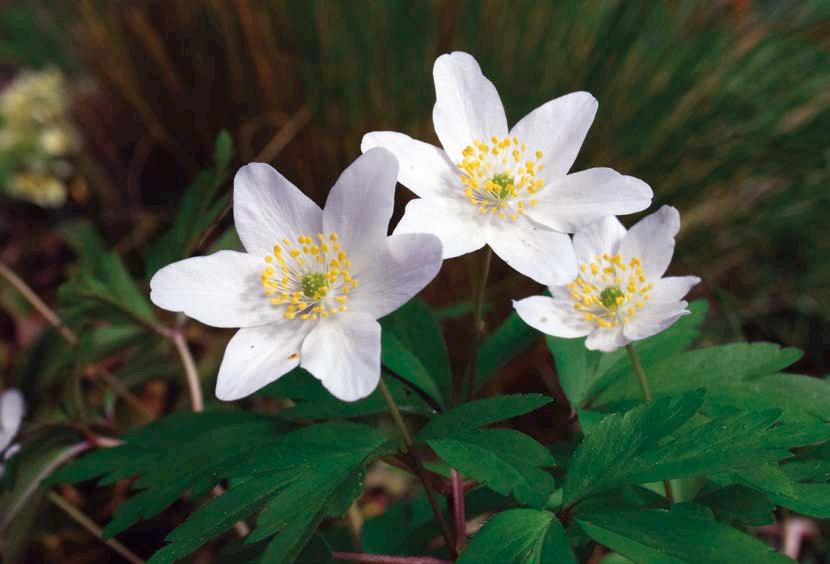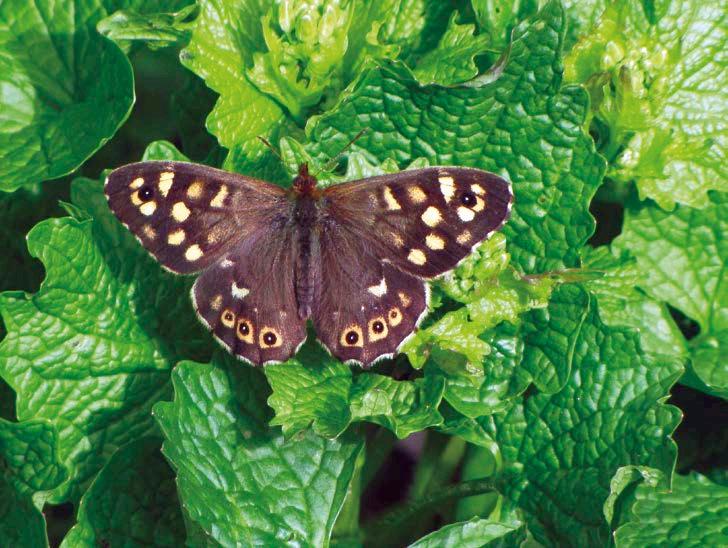
5 minute read
Nature
Melwood Your Local Nature Reserve an ongoing project
Melwood’s hidden gems
Advertisement
The steady work of the Melwood Conservation group is slowly but surely increasing the range of wild flowers now inhabiting Melwood but it is all too easy to miss them.
The small dark purple flowers of Dusky Cranesbill were scattered along path edges and visible through much of April, May and some into early June, but because they are small and the surrounding vegetation may be tall, you need to look to find them. This species has spread well from a few plants introduced about 8 years ago.
Ransoms, or Wild Garlic as it is also known, occurs in just 2 clumps at present but may have been present in the wood for many years. The biggest clump is in the base of elm scrub near to the seat and is overgrown for much of the year, but becomes more obvious once in flower, typically at the end of April. A second plant is further into the wood.
The conservation group made attempts to introduce Wood Anemone about 5 years ago. Very few plants appeared the following year and it was thought all had perished in soil that was insufficiently organic and too dry, but 2 years ago a few leaves were spotted in one of the planting sites and last year there were 2 blooms. Flowers were present again in April this year but far more surprising were the 2 blooms seen on the opposite side of the wood. I do not recall plants ever being introduced in that area.
The spread of the genuine English Bluebell is very slow, despite large numbers grown from seed, but we will continue with further plantings in the hope that one day we may have something that can fairly be referred to as a ‘bluebell wood’. Spanish bluebells may then have to be removed to keep the strain pure. In the meantime, the Spanish species provides some colour after the daffodils have finished.
Another far from obvious success is the Few-flowered Leek. From a few plants salvaged from a threatened Cambridgeshire roadside verge, little groups, with their strange white flowers, are appearing in many parts of the wood. This plant, like some other members of the onion family, produces small bulblets from the flower head as the flowers die and these can grow into new plants when they drop. The spread may be due to these tiny bulbs being carried around the wood by mice or voles. So far we do not appear to have lost many plants to dogs or foxes, which may eat garlic and onions when suffering from stomach troubles.
Away from the botanical interest, the year got off to a good start for butterflies. Peacock and Brimstone butterflies made an early appearance and Orange Tips were in good numbers. The Holly Blue was recorded but seems to be far
Wood Anemone (Anemone nemorosa) Few-flowered Leek (Allium paradoxum)



Changing attitudes by education www.RoADARC.org.uk
The Ayes have it, the Ayes have it! If you have followed the House of Commons debates on Brexit this phrase will be all too common.
However, drivers and riders should have this phrase emblazoned upon their brains. Most collisions (no, they are not accidents because they are avoidable) are caused by one or more parties to the collision failing to use their eyes to see what is happening around them. Gaining information through observation about what is happening around you is mostly gained from the eyes continuously scanning as far as you can see, the middle and foreground, behind you and to the sides. If your eyesight becomes defective through slow degradation due to illness or age, or is affected by drink or drugs, you become a danger to yourself and to those that are sharing the road.
Looking but failing to see a hazard can also be the result of the driver being distracted by the radio, other occupants of the vehicle or, dare I say, using a mobile telephone whether handsfree or not. How often have you had a near miss because your failed to see the motorcyclist, cyclist, pedestrian etc.?
Our local Police have recently attended crashes where drivers have failed the basic eyesight test. In one case not only could the driver not see the number plate and fail to read the letters and numbers until just 7 metres away (should be 20.5m) but, to make matters worse, at first they could not even see that the number plate was attached to a Police BMW ‘Battenberg’ marked traffic car.
Top Tip: You are sharing the road with these people with poor vision. You have seen them, but have they really seen you? People look but they don’t always see, so treat all other drivers/riders with caution.
Should you wish to know more about the Group and the free training that we offer visit www.roadarc.org.uk where you can obtain more information and can download a Membership Application Form.

Speckled Wood (Pararge aegeria) more at home in gardens. By mid-April the Speckled Wood was present in sunny areas and along the sunny side of the meadow, confirming its status as the wood’s most consistent resident, and a Red Admiral in mid-April was the first example of this migratory species I have seen this year. I suppose there is not much surprise in this, considering the periods of strong southerly air flow Britain has enjoyed from time to time during early 2019. The crunch time for butterflies may well be July and August, when we see the effects

Red Admiral (Vanessa atalanta)
of the hot dry summer of 2018, which scorched the grassland to a crisp at the time when many butterflies needed their caterpillars to be establishing on clumps of grass in which they may feed until the following spring.
The group held a very well attended bird walk in May, led by Mike Foley from the British Ornithological Trust and for many years a volunteer at Fowlmere. He has an amazing ear for the varied songs amongst the trees and provided detailed information on the status on the species spotted – their decline or increase, migration patterns and threats to our environment. The number of bird species spotted was 22 which makes a total of 49 spotted on all the bird walks since 2008. Jim Reid Melwood Conservation Group http://melwood.btck.co.uk If you are interested in joining the conservation work, please contact: Jim Reid 01763 260231 or Bruce Huett 01763 232855










